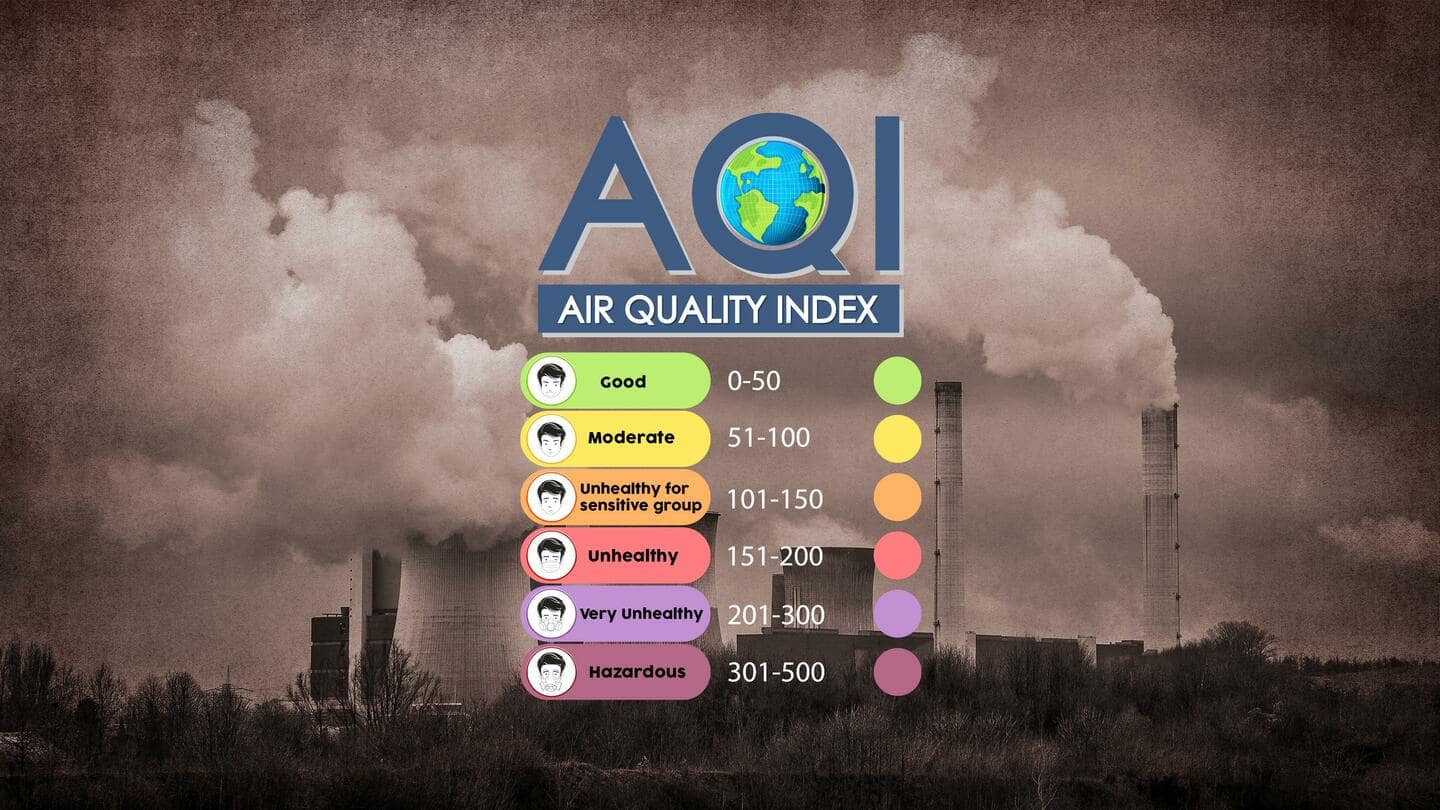
#NewsBytesExplainer: What is AQI? How is it measured?
What's the story
The smoke of Diwali firecrackers has settled everywhere but in New Delhi. Stubble burning and the after-effects of the "festival of lights" have the national capital reeling under air pollution.
The average air quality index (AQI) of New Delhi is at "severe" now. However, some of you might be wondering what that means.
Let's take a look at what AQI is and its importance.
AQI
What is air quality index?
As you can probably guess from the name, the air quality index tells us about the quality of air around us.
More specifically, it is a scale that shows how polluted the air is. The AQI is used to report the scale of pollution in a locality on a daily basis.
It shows the amount of pollutants in the air.
Gauge
How does AQI help people?
The AQI is used by governments to let ordinary citizens know about the air quality in their area.
The scale is developed by keeping in mind the acceptable levels of major pollutants in the air. Therefore, if the AQI is not at a recommended level, it means that such pollutants are more than desirable.
This serves as a warning to the public.
Development
USEPA launched air quality index in 1999
The air quality index was developed by the US Environmental Protection Agency and was initially launched in 1999.
Since then, many countries, including India, have developed their own AQIs.
The development of AQI involves the formulation of sub-indices for each pollutant and then aggregating these sub-indices into a general index.
Then, a point scale that shows different levels of severity of pollution is developed.
Measurement
AQI shows levels of health concern vis-a-vis air pollution
The AQI scale is different for most countries.
In the US, five major pollutants are taken into consideration, including ground-level ozone, particulate matter (PM10 and PM2.5), carbon monoxide, sulfur dioxide, and nitrogen oxide.
The scale ranges from 0-500, with 0-50 being good and 301-500 being hazardous. The scale shows the levels of health concern vis-a-vis air pollution.
Local method
8 pollutants are taken into consideration in India
In India, for calculating AQI, eight pollutants are taken into consideration by the Central Pollution Control Board (CPCB), including particulate matter (PM10 and PM2.5), carbon monoxide, ozone, nitrogen dioxide, sulfur dioxide, ammonia, and lead.
The scale ranges from 0-500. It is divided into multiple categories such as good (0-50), moderate (51-100), poor (101-200), unhealthy (201-300), severe (310-400), and hazardous (401-500+).
Calculation
Overall AQI is not calculated all the time
In India, overall AQI is calculated at a monitoring station only if data for at least three pollutants are available. One of them has to be PM2.5 or PM10.
Otherwise, sub-indices for individual pollutants are calculated based on their 24-hour average and health breakpoint concentration range.
The worst sub-index reading becomes the AQI for that location.
Information
How can you keep track of AQI in an area?
Keeping an eye out for the AQI of a locality will be very helpful before you decide to visit it. To get an idea about how polluted a locality is, you can visit AQI India or CPCB's National Air Quality Index website.
Apps
Apple Maps and Google Maps also show air quality index
You can also track the AQI of an area using your smartphones, desktops, or smartwatches.
On Apple, both the Weather app and Apple Maps show AQI. Apple introduced the feature in the former in 2020, while Maps has been showing the index since iOS 12.2 in 2019.
Earlier this year, Google introduced the AQI feature in Google Maps. It is also available in India.